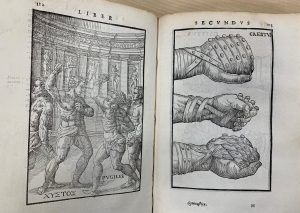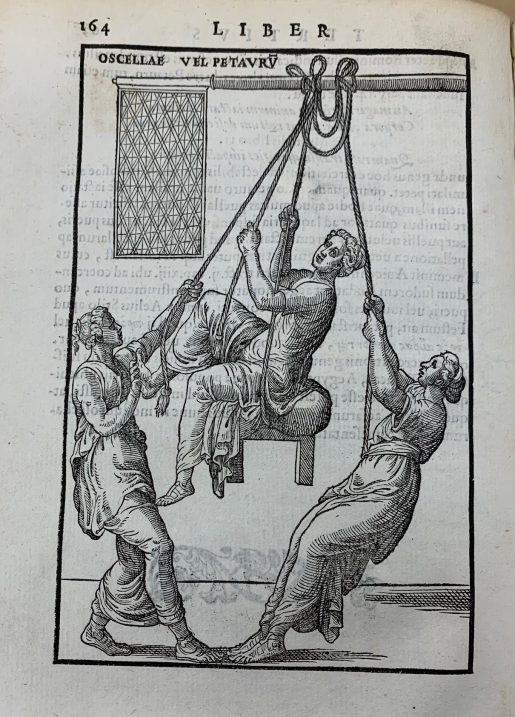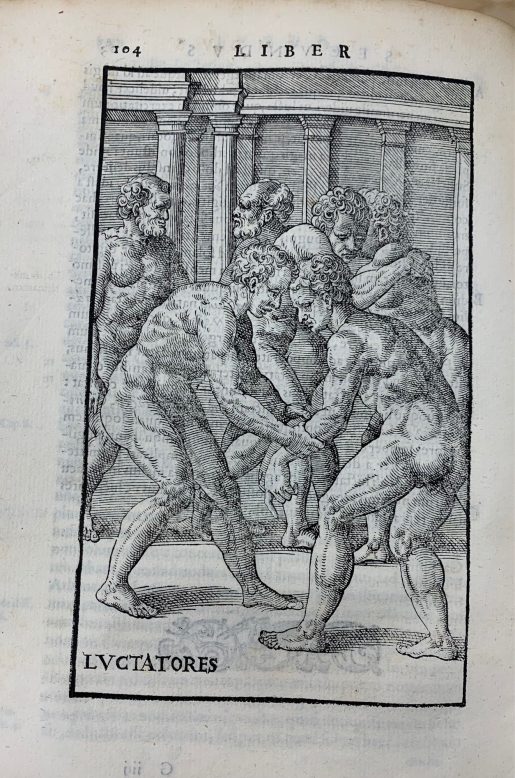
The art of exercising for health, which ancient Greeks and Romans cherished so much, was lost in the Middle Ages. The Renaissance authors brought that ancient practice back. Rediscovering the works of Hippocrates and Galen allowed them to research and re-evaluate the forgotten concepts of hygiene and health anew. One of those authors was Girolamo Mercuriale (1530-1603), an Italian physician from Forli. He was a prolific author and left as his legacy several interesting works. However, the one that earned him the appointment as professor of practical medicine at the University of Padua was his study of gymnastics in the ancient world, published in 1569. The illustrated second edition of this work appeared in Venice in 1573, followed by the third in 1587 as “De arte gymnastica” (On the art of gymnastics). The latter was recently acquired by our library. It will strengthen our collection of books supporting research into the history of health and rehabilitation science.
“De arte gymnastica” is one of the earliest works on sports and the benefits of exercise. The author described the great system of physical training for youth and soldiers in the ancient world. He divided exercise into three groups: regular, military, and athletic. For each of the discussed activities, such as wrestling, horse riding, running, jumping, dancing, discus, and boxing, Mercuriale also indicated its effects on health as well as its preventive, hygienic, and curative benefits. He also included principles of physical therapy and measures like baths and massage that need to be taken to counter the bad effects of exercising.
- Plate depicting ropedancers on a rope pole (petaurum)
- Plate depicting wrestlers
The illustrations added to this work since the 1573 edition were meant to stimulate readers’ thinking on the nature of athletics in the classical world. They were designed by the well-known Renaissance artist Pirro Ligorio and executed by a German engraver Cristoforo Coriolani from Nürnberg, who spent most of his working life in Italy. The volume is bound in limp vellum. The covers are slightly warped due to the shrinkage of its leather. The lower chunk of the spine is missing but, overall, it is in a good shape. The book does not have any meaningful annotations, but it is signed by two previous owners: with initials “E. R.” dated 1785 on the title page and with the signature “I. H. Bransby” on the end paper.
It is a noteworthy addition to our historical collections.
~Małgorzata Fort

